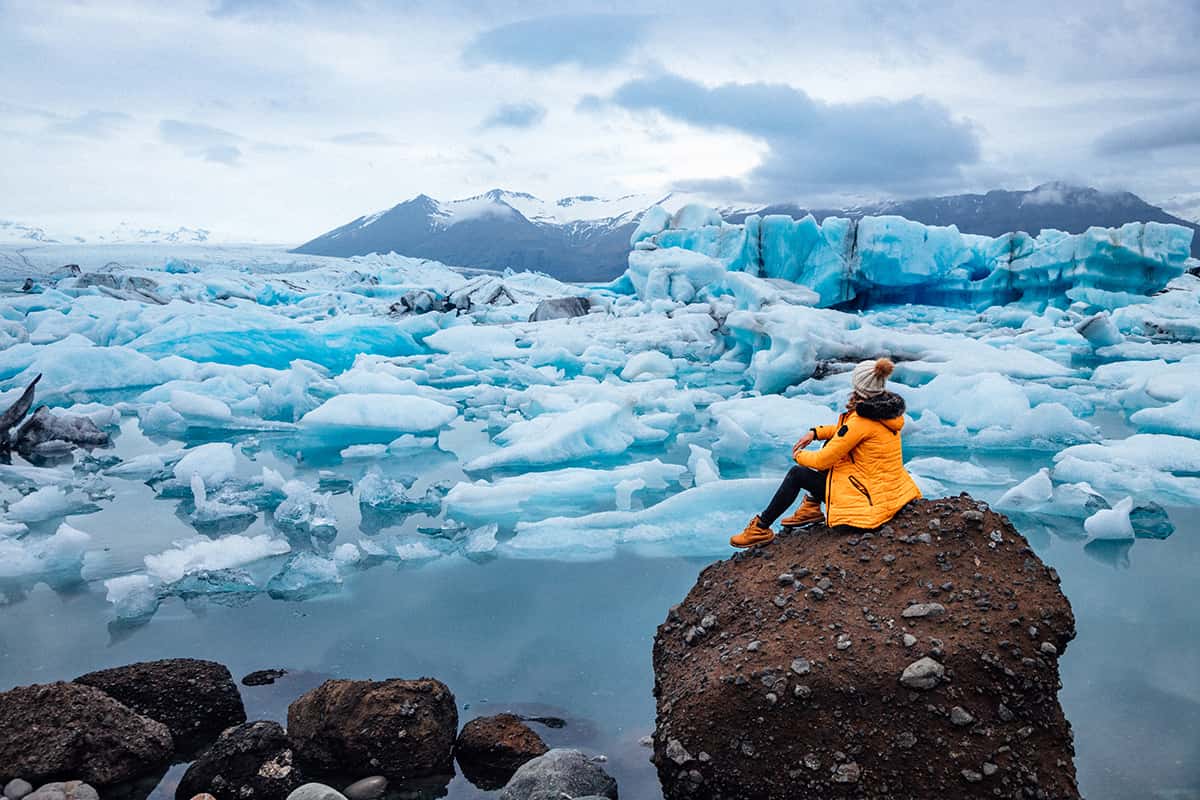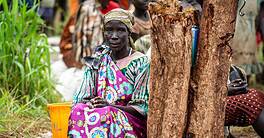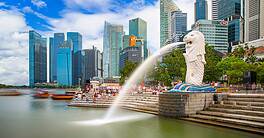The aftermath of a global pandemic re-shuffles Global Finance’s ranking of the world’s safest countries.
With the world turned upside-down and inside-out by international conflict—Russia’s war in Ukraine, Azerbaijan’s attacks on Armenia, the brewing civil war in Sudan—determining the safest countries is now more important than ever. Global Finance’s safest countries in the world rankings features updated data, a new time frame, and incorporates each country’s experience and risk from Covid-19.
So which countries have proven to be safe and which have not?
Like our previous rankings, the safety score for countries takes into account three fundamental factors. These factors are war and peace as measured by the global peace index, personal security meaning a very low crime rate, and the risk of natural disasters which includes the potential of a new pandemic. In order to make sure the data is relevant to current conditions, the Covid-19 scores were derived from data as of May 30, 2021. Compared to the fundamental factors, our Covid-19 scores weight deaths per capita from the disease twice as heavily as the other factors and takes vaccinations per capita as a countervailing or positive factor into account, weighing it equally as the other fundamentals. In essence, a country’s overall score is made up of one-half fundamental factors, one-third Covid-19 deaths per capita, and one-sixth Covid vaccination per capita.
Deaths per capita is a direct measure of how well or poorly a given country responded to the spread of Covid-19 which in turn is based on the country’s healthcare infrastructure, government capabilities, political leadership and culture in face of a major, unexpected crisis. Vaccinations per capita on the other hand reflects a country’s financial power and future performance via preventative measures stemming further outbreaks.
Since Global Finance’s safest country ranking is driven by data, countries without the relevant metrics were excluded. Countries suffering from political instability like Belarus and Sudan do not have scores from the safety and tourism report while other countries like Kosovo and Somalia are missing data from the World Risk Report.
Click here to see the World’s Safest Banks
The top ranking safest countries are spread amongst the European Union and Asia, making them strong contenders for the title of most peaceful region overall. Of the top 20, nine of them are located in Europe and four of those are Northern European (Iceland, Finland, Denmark, Norway). The remaining 11 out of 20 are primarily countries in the Middle East or Southeast/East Asia. Missing from the top 20 are many of the other European countries that performed well in past rankings. Countries such as Portugal, Spain, Slovenia, and Belgium suffered greatly in the rankings because their governments handled the Covid-19 crisis poorly and experienced high Covid-19 deaths per capita as a result. Portugal (29), Spain (41), Slovenia (47), and Belgium (66) all had some of the highest Covid-19 death rates in the world and previously ranked in the top 20 safest countries. Hungary (90), Italy (84), and the UK (38) also saw high Covid-19 deaths per capita which pushed them downward in the ranking. Despite being the world’s only superpower, the United States ranks 71 because although it scored well in other categories it was unable to prevent widespread outbreaks and deaths.
The pandemic created a situation in which many developing countries in Africa and Southeast Asia outperformed their more developed peers. Laos (32), Vietnam (49), and Cambodia (80) as well as African countries such as Uganda (81) and Rwanda (37) all were able to effectively manage Covid-19 and limit deaths per capita which dramatically improved their safety rankings compared to previous years. Yet while these countries effectively managed and prevented Covid-19 outbreaks, they often have much higher risks in terms of military conflict, crime, and general danger to the population.
In essence, Covid-19 disproved the conventional wisdom about the safety of any given country. Countries in North America, Europe, and perhaps some in the Middle East and Asia would dominate the top spots mainly because of their wealth and developed status. Developed countries would also be much better equipped to handle something as dangerous and complex as a pandemic than their less developed peers. Yet what we have seen is that many of the world’s major economic powers (United States, France, U.K) or regional powerhouses (Brazil, Russia, India, China) became epicenters of the pandemic in their areas of the world.
While Covid-19 reshuffled our world’s safest countries ranking, it did not boost the worst-performing countries and their relative rankings. Countries with serious civil conflict that have high risk from natural disasters such as the Philippines, Nigeria, and El Salvador all reported relatively low death tolls from Covid-19, yet performed poorly in terms of safety overall. Yemen’s brutal civil war and El Salvador’s high murder rate (the highest in Latin America) offset any improvement in safety ranking due to avoiding the worst-case Covid-19 scenario.
The Philippines remained at the bottom of Global Finance’s safest country ranking where it was in the 2019 and 2017 editions because of relatively high crime rates, high natural disaster risk (volcanic eruptions, earthquakes, tsunamis), and poor response to the Covid-19 pandemic. Because we derive our composite safety score from purely quantitative data and indices from global publications, we do not quantify the intensity or lethality risk of factors such as war. So Yemen (where 233,000 people have died as a result of the war) is ranked as relatively more safe than the Philippines because it has less natural disaster risk and violent crimes.
A final word of caution: while the fundamental factors of this ranking rely on concise reports produced by NGOs and international organizations, the Covid-19 death tolls and the vaccination rates are largely based on self-reporting by governments. Countries like China, Tanzania, and Venezuela may not be producing credible figures. Another point of difficulty is that some governments may not be capable of gathering all the necessary data. In developing countries without standardized and modern government reporting structures, deaths can go unreported, making it impossible to measure death tolls accurately. This is probably what is occurring in India as many families have reported undercounting of Covid-19 deaths by the country’s authorities.
To sum up, Covid-19 upended pre-pandemic assumptions regarding which countries are safest and why. While the core factors that ordinarily make up our safety rankings are largely unchanged, Covid-19 presented a new challenge for governments across the world. And as the world’s vaccination numbers steadily rise, we are left with a sobering question: How would the world cope with a future pandemic?
Safest Countries in the World 2023
Global Finance magazine’s safest country index factors in the risks facing individuals such as natural disasters, violent crimes, terrorism and war to present a well-rounded analysis of overall societal safety.
| Rank | Country | Global Finance Safest Country Index Score |
| 1 | 🇮🇸Iceland | 3.9724 |
| 2 | 🇦🇪United Arab Emirates | 4.2043 |
| 3 | 🇶🇦Qatar | 4.5609 |
| 4 | 🇸🇬Singapore | 4.6184 |
| 5 | 🇫🇮Finland | 4.9782 |
| 6 | 🇲🇳Mongolia | 5.6092 |
| 7 | 🇳🇴Norway | 5.9003 |
| 8 | 🇩🇰Denmark | 6.2422 |
| 9 | 🇨🇦Canada | 6.3129 |
| 10 | 🇳🇿New Zealand | 6.4352 |
| 11 | 🇦🇺Australia | 6.7699 |
| 12 | 🇧🇭Bahrain | 6.8054 |
| 13 | 🇨🇾Cyprus | 7.2315 |
| 14 | 🇨🇭Switzerland | 7.3316 |
| 15 | 🇦🇹Austria | 7.3454 |
| 16 | 🇪🇪Estonia | 7.4615 |
| 17 | 🇰🇷South Korea | 7.5089 |
| 18 | 🇰🇼Kuwait | 7.6480 |
| 19 | 🇸🇦Saudi Arabia | 7.6917 |
| 20 | 🇩🇪Germany | 7.7059 |
| 21 | 🇮🇪Ireland | 7.8351 |
| 22 | 🇯🇵Japan | 7.9247 |
| 23 | 🇮🇱Israel | 8.0181 |
| 24 | 🇲🇦Morocco | 8.0539 |
| 25 | 🇴🇲Oman | 8.0631 |
| 26 | 🇨🇳China | 8.0636 |
| 27 | 🇲🇾Malaysia | 8.0923 |
| 28 | 🇲🇺Mauritius | 8.1622 |
| 29 | 🇵🇹Portugal | 8.2539 |
| 30 | 🇰🇿Kazakhstan | 8.2994 |
| 31 | 🇸🇪Sweden | 8.4163 |
| 32 | 🇱🇦Lao P.D.R. | 8.4237 |
| 33 | 🇳🇱Netherlands | 8.7304 |
| 34 | 🇷🇸Serbia | 8.8283 |
| 35 | 🇱🇹Lithuania | 8.8327 |
| 36 | 🇧🇼Botswana | 8.9897 |
| 37 | 🇷🇼Rwanda | 9.0024 |
| 38 | 🇬🇧United KingdomUnited Kingdom | 9.0055 |
| 39 | 🇱🇻Latvia | 9.0456 |
| 40 | 🇹🇯Tajikistan | 9.2339 |
| 41 | 🇪🇸Spain | 9.2561 |
| 42 | 🇬🇭Ghana | 9.2945 |
| 43 | 🇳🇵Nepal | 9.2971 |
| 44 | 🇱🇰Sri Lanka | 9.3609 |
| 45 | 🇿🇲Zambia | 9.3652 |
| 46 | 🇦🇿Azerbaijan | 9.4562 |
| 47 | 🇸🇮Slovenia | 9.554 |
| 48 | 🇲🇼Malawi | 9.5802 |
| 49 | 🇻🇳Vietnam | 9.6150 |
| 50 | 🇹🇿Tanzania | 9.6671 |
| 51 | 🇷🇴Romania | 9.6706 |
| 52 | 🇯🇴Jordan | 9.6991 |
| 53 | 🇱🇷Liberia | 9.7067 |
| 54 | 🇸🇳Senegal | 9.7235 |
| 55 | 🇬🇶Equatorial Guinea | 9.7488 |
| 56 | 🇱🇸Lesotho | 9.7576 |
| 57 | 🇫🇷France | 9.7914 |
| 58 | 🇬🇷Greece | 9.8026 |
| 59 | 🇸🇱Sierra Leone | 9.8059 |
| 60 | 🇮🇩Indonesia | 9.8128 |
| 61 | 🇩🇿Algeria | 9.8847 |
| 62 | 🇳🇦Namibia | 9.9067 |
| 63 | 🇦🇱Albania | 9.9300 |
| 64 | 🇲🇷Mauritania | 9.9736 |
| 65 | 🇪🇬Egypt | 9.9841 |
| 66 | 🇧🇪Belgium | 9.9869 |
| 67 | 🇬🇲The Gambia | 10.0195 |
| 68 | 🇨🇱Chile | 10.0716 |
| 69 | 🇵🇱Poland | 10.1538 |
| 70 | 🇹🇭Thailand | 10.1649 |
| 71 | 🇺🇸United States | 10.1875 |
| 72 | 🇺🇾Uruguay | 10.2331 |
| 73 | 🇰🇬Kyrgyz Republic | 10.2730 |
| 74 | 🇭🇷Croatia | 10.3129 |
| 75 | 🇦🇴Angola | 10.5200 |
| 76 | 🇧🇯Benin | 10.5253 |
| 77 | 🇩🇴Dominican Republic | 10.5449 |
| 78 | 🇬🇳Guinea | 10.5547 |
| 79 | 🇬🇲Zimbabwe | 10.6430 |
| 80 | 🇰🇭Cambodia | 10.6824 |
| 81 | 🇺🇬Uganda | 10.6838 |
| 82 | 🇲🇿Mozambique | 10.7103 |
| 83 | 🇪🇹Ethiopia | 10.7221 |
| 84 | 🇮🇹Italy | 10.7901 |
| 85 | 🇸🇰Slovak Republic | 10.8384 |
| 86 | 🇨🇿Czech Republic | 10.8644 |
| 87 | 🇨🇮Côte d’Ivoire | 10.9747 |
| 88 | 🇬🇪Georgia | 11.0289 |
| 89 | 🇧🇴Bolivia | 11.2715 |
| 90 | 🇭🇺Hungary | 11.2723 |
| 91 | 🇮🇳India | 11.2968 |
| 92 | 🇻🇺Burkina Faso | 11.3025 |
| 93 | 🇹🇳Tunisia | 11.3096 |
| 94 | 🇧🇮Burundi | 11.4464 |
| 95 | 🇵🇾Paraguay | 11.4676 |
| 96 | 🇰🇪Kenya | 11.4996 |
| 97 | 🇨🇷Costa Rica | 11.5232 |
| 98 | 🇦🇷Argentina | 11.5349 |
| 99 | 🇳🇮Nicaragua | 11.5449 |
| 100 | 🇵🇦Panama | 11.6456 |
| 101 | 🇬🇼Guinea-Bissau | 11.6872 |
| 102 | 🇦🇲Armenia | 11.7685 |
| 103 | 🇭🇹Haiti | 11.8219 |
| 104 | 🇷🇺Russia | 11.8306 |
| 105 | 🇧🇩Bangladesh | 11.8453 |
| 106 | 🇮🇷Iran | 11.8461 |
| 107 | 🇹🇷Turkey | 11.8725 |
| 108 | 🇪🇨Ecuador | 11.9027 |
| 109 | 🇹🇹Trinidad and Tobago | 11.9682 |
| 110 | 🇯🇲Jamaica | 12.3555 |
| 111 | 🇨🇲Cameroon | 12.3830 |
| 112 | 🇹🇩Chad | 12.4076 |
| 113 | 🇲🇩Moldova | 12.5802 |
| 114 | 🇧🇬Bulgaria | 12.7019 |
| 115 | 🇲🇱Mali | 12.7392 |
| 116 | 🇵🇰Pakistan | 12.7415 |
| 117 | 🇨🇩Democratic Republic of the Congo | 12.7944 |
| 118 | 🇱🇧Lebanon | 12.8760 |
| 119 | 🇺🇦Ukraine | 12.8897 |
| 120 | 🇿🇦South Africa | 13.0681 |
| 121 | 🇲🇪Montenegro | 13.0748 |
| 122 | 🇻🇪Venezuela | 13.3481 |
| 123 | 🇭🇳Honduras | 13.5859 |
| 124 | 🇸🇻El Salvador | 13.6809 |
| 125 | 🇲🇰North Macedonia | 13.7346 |
| 126 | 🇾🇪Yemen | 13.7672 |
| 127 | 🇵🇪Peru | 13.7978 |
| 128 | 🇲🇽Mexico | 14.0531 |
| 129 | 🇧🇷Brazil | 14.1011 |
| 130 | 🇧🇦Bosnia and Herzegovina | 14.1361 |
| 131 | 🇳🇬Nigeria | 14.2778 |
| 132 | 🇬🇹Guatemala | 14.5842 |
| 133 | 🇨🇴Colombia | 14.8461 |
| 134 | 🇵🇭Philippines | 14.8899 |
Sources: World Economic Forum, The Global Institute For Peace.




